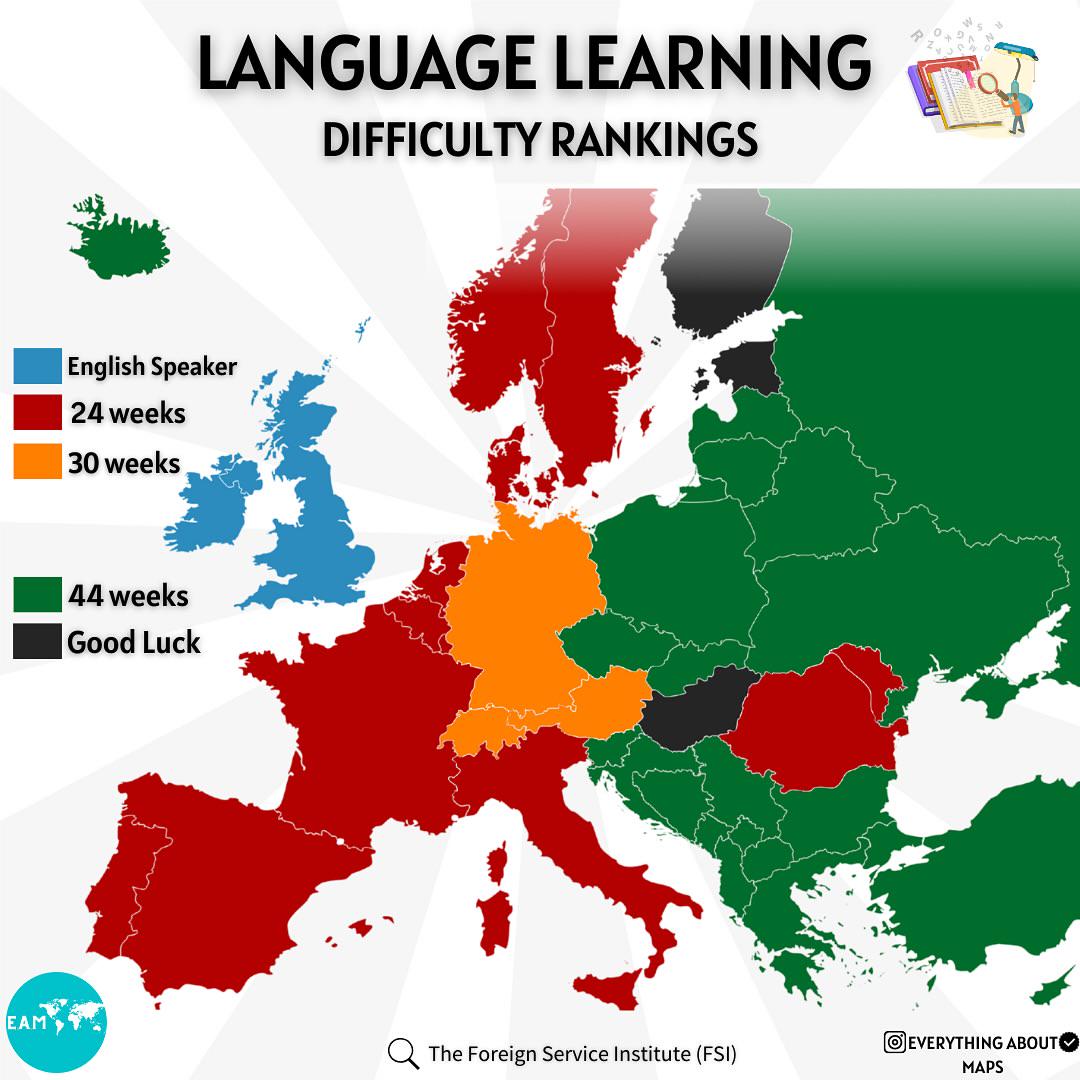Language Learning Difficulty Rankings Map


David Chen
Data Visualization Specialist
David Chen is an expert in transforming complex geographic datasets into compelling visual narratives. He combines his background in computer science ...
Geographic Analysis
What This Map Shows
The "Language Learning Difficulty Rankings" map provides a visual representation of how challenging it is for native English speakers to learn various languages around the world. The rankings are based on several factors, including linguistic similarities, grammatical complexity, and cultural context. This visualization highlights the languages that might require the most effort and time to master, giving a clear overview of the landscape of language learning.
Deep Dive into Language Learning Difficulty
Language learning is a complex endeavor that varies significantly based on the learner's native language. For native English speakers, the Foreign Service Institute (FSI) has categorized languages into five distinct groups based on their difficulty. Group I languages, such as Spanish and Italian, are generally considered easier due to their similarities with English. On the other hand, languages like Arabic, Chinese, and Japanese fall into Group IV and V, deemed the most challenging due to their unique scripts, grammatical structures, and cultural contexts.
Interestingly, one of the primary reasons some languages are easier to learn than others is their lexical similarity to English. For instance, languages that share a common Germanic root, such as Dutch and German, can often be more straightforward for English speakers to grasp. In contrast, languages that employ entirely different writing systems or grammatical rules, like Chinese with its tonal nature and logographic script, require a much steeper learning curve.
The FSI estimates that it takes approximately 24-30 weeks of intensive study (around 600-750 hours) to achieve proficiency in languages like Spanish. In contrast, languages such as Arabic or Korean can take over 88 weeks (approximately 2200 hours) to master. This significant difference highlights the necessity for learners to be aware of the inherent challenges in their chosen language path.
Moreover, cultural factors also play a crucial role in language learning difficulty. Understanding cultural references, idiomatic expressions, and social norms can be just as important as mastering vocabulary and grammar. For example, navigating the intricate politeness levels in Japanese can be daunting for learners unaccustomed to such nuances. This interplay of language and culture makes immersion and practice essential components of successful language acquisition.
Regional Analysis
Looking at the map, we can see distinct regions that present varying levels of difficulty for English speakers. In Europe, languages like French and Italian appear in the easier categories, while Hungarian and Finnish are often seen as more challenging due to their complex grammatical rules and vocabulary that does not share roots with English.
In Asia, the differences are stark. Languages such as Thai and Vietnamese, categorized as Group IV, offer challenges due to their tonal nature, whereas languages like Hindi and Bengali are somewhat easier for English speakers, thanks to their shared vocabulary from British colonial history. However, the vast number of dialects and regional variations can still pose challenges.
Countries like China, with its Mandarin Chinese, present a formidable barrier due to its completely different writing system and tonal pronunciation. Conversely, in Africa, languages like Swahili, while challenging, are often seen as more accessible due to their Bantu roots and the influence of English and Arabic vocabulary, making them a popular choice for learners.
Significance and Impact
Understanding language learning difficulty is more than just an academic exercise; it has real-world implications. In an increasingly globalized society, the ability to communicate across cultures is paramount. Businesses are expanding into international markets, and having employees proficient in different languages can significantly improve relations and operations.
Moreover, language acquisition facilitates cultural exchange, enhances cognitive abilities, and promotes social cohesion. In our modern world, where migration and travel are common, being multilingual is not just a valuable skill but a necessity.
As trends shift towards globalization, future projections suggest that the demand for language learning will continue to rise. With technology evolving, innovative language learning tools are emerging, making it easier for people to tackle more challenging languages than ever before. As learners become more aware of the difficulties associated with different languages, they will be better equipped to choose their paths wisely, fostering a more interconnected world.
In conclusion, the "Language Learning Difficulty Rankings" map serves as an insightful tool for understanding the linguistic landscape. By recognizing the challenges associated with different languages, learners can approach their educational journeys with realistic expectations and informed strategies.
Visualization Details
- Published
- August 10, 2025
- Views
- 104
Comments
Loading comments...